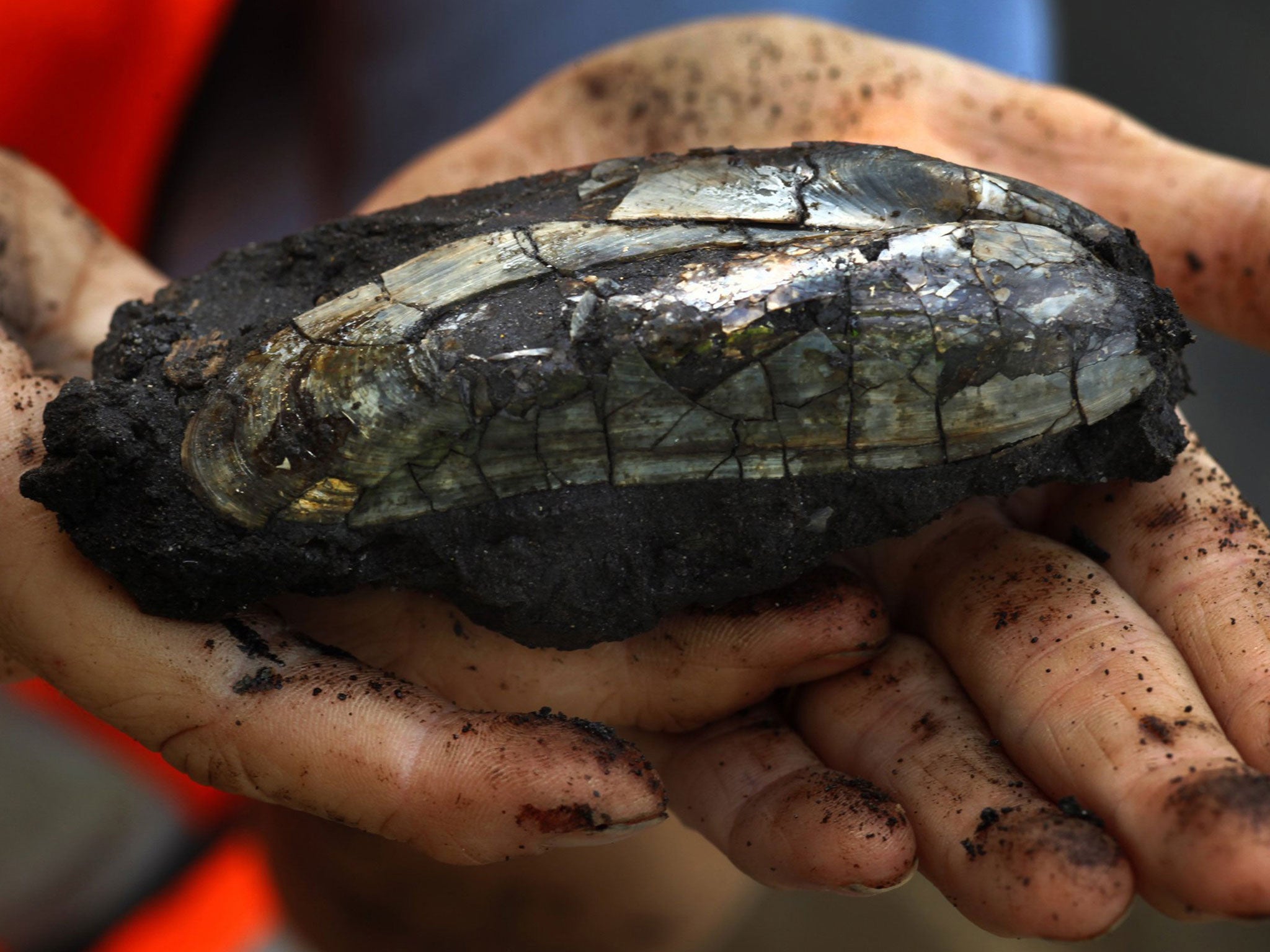A fistful of sand dollars: Ancient molluscs and 'two-million-year-old sea lion's mouth' found in Hollywood’s fossil treasure trove

Your support helps us to tell the story
From reproductive rights to climate change to Big Tech, The Independent is on the ground when the story is developing. Whether it's investigating the financials of Elon Musk's pro-Trump PAC or producing our latest documentary, 'The A Word', which shines a light on the American women fighting for reproductive rights, we know how important it is to parse out the facts from the messaging.
At such a critical moment in US history, we need reporters on the ground. Your donation allows us to keep sending journalists to speak to both sides of the story.
The Independent is trusted by Americans across the entire political spectrum. And unlike many other quality news outlets, we choose not to lock Americans out of our reporting and analysis with paywalls. We believe quality journalism should be available to everyone, paid for by those who can afford it.
Your support makes all the difference.When movie stars sink their handprints into the Hollywood Walk of Fame, they may think that they’re leaving a mark on the city’s history. But just a few miles away, researchers are uncovering the remains of some rather more ancient celebrities.
The construction of a new subway line in Los Angeles has uncovered a new trove of prehistoric fossils. Over the weekend, the Los Angeles Times reported the discovery of ancient molluscs, sand dollars and what might be the mouth of a two-million-year-old sea lion in the Miracle Mile neighbourhood, just south of Hollywood, where the waves of the Pacific Ocean once lapped.
Palaeontologist Kim Scott, a field and laboratory director for Cogstone Resource Management, a California firm specialising in palaeontology and archaeology, told the newspaper: “Here on the Miracle Mile is where the best record of life from the last great Ice Age in the world is found. You’re walking along an Ice Age shoreline.”
The neighbourhood is now several miles inland, and contains some of LA’s best museums, restaurants and shops. It is also home to the famous La Brea Tar Pits, a site where sludge from ancient underground oil fields once bubbled up to form bogs, which trapped even large animals and sealed in their skeletons for millennia. Thus researchers have dug up the remains of dire wolves, sabre-toothed tigers and other species in the centre of the city.
Several years ago, during construction of an underground garage at the Los Angeles County Museum of Art, a bulldozer driver stumbled on the near-complete skeleton of a Columbian mammoth with 10ft tusks, which was later christened Zed by scientists.
The latest finds were not unexpected, given the planned subway line’s proximity to the tar pits and the geological make-up of the ground. Among the gems excavated from the site were clams, snails and mussels. Scott and her colleagues made the discoveries in an 18ft x 38ft shaft dug before work on a new subway line to the city’s west side begins in earnest next year.
Scott said that the objects from the uppermost 40ft of the shaft stretch back approximately 50,000 years. Deeper than 40ft is so-called “near shore” material, which dates back as many as 330,000 years. Further fossil finds are anticipated during work on a nearby underground station, which is due to begin shortly.
Cogstone and the Los Angeles County Metropolitan Transportation Authority (MTA) are working together to identify and preserve their discoveries, with the help of the George C Page Museum, which is dedicated to researching the tar pits and their contents. MTA spokesman Dave Sotero told the LA Times, “LA’s prehistoric past is meeting its subway future.”
Join our commenting forum
Join thought-provoking conversations, follow other Independent readers and see their replies
Comments